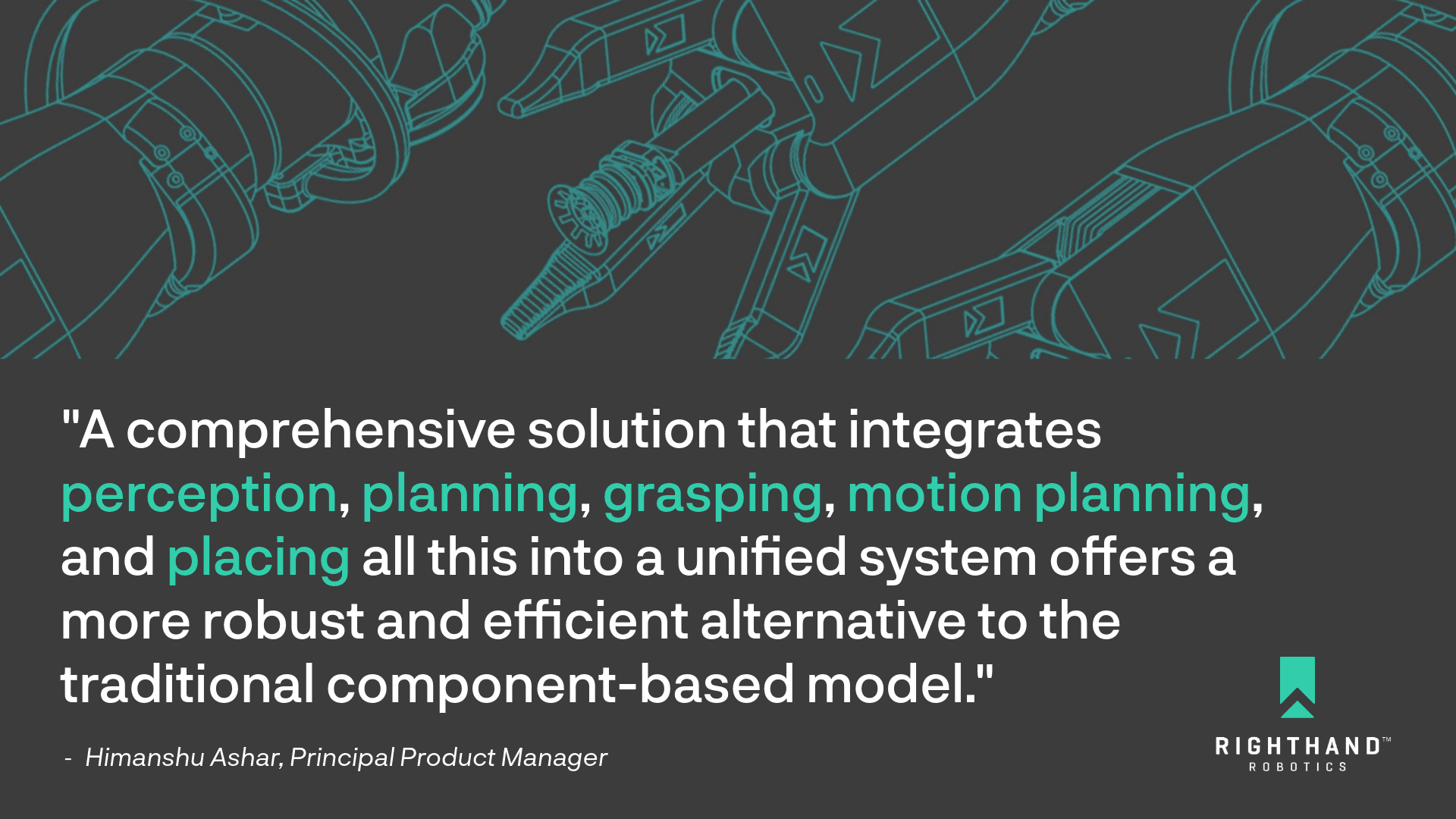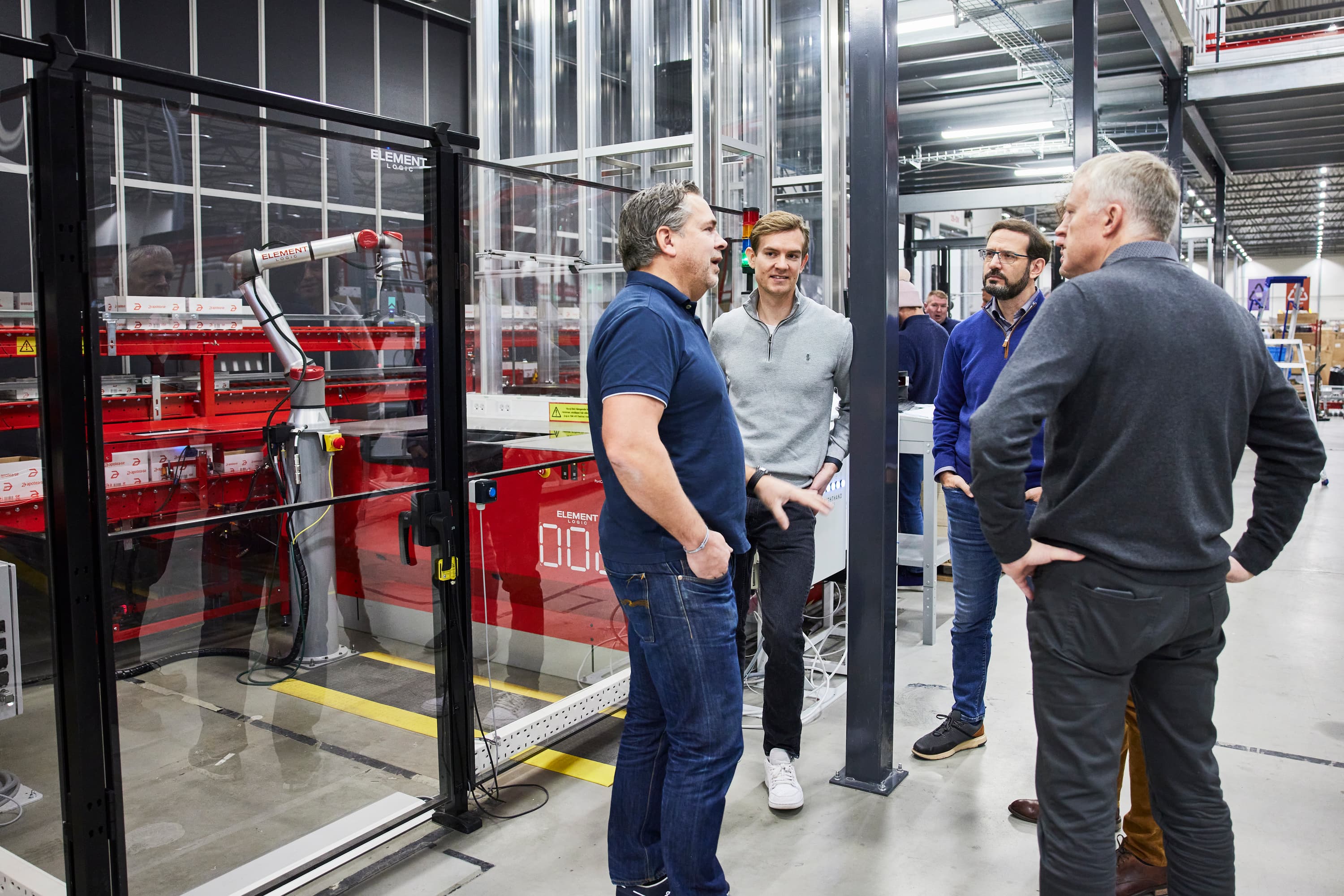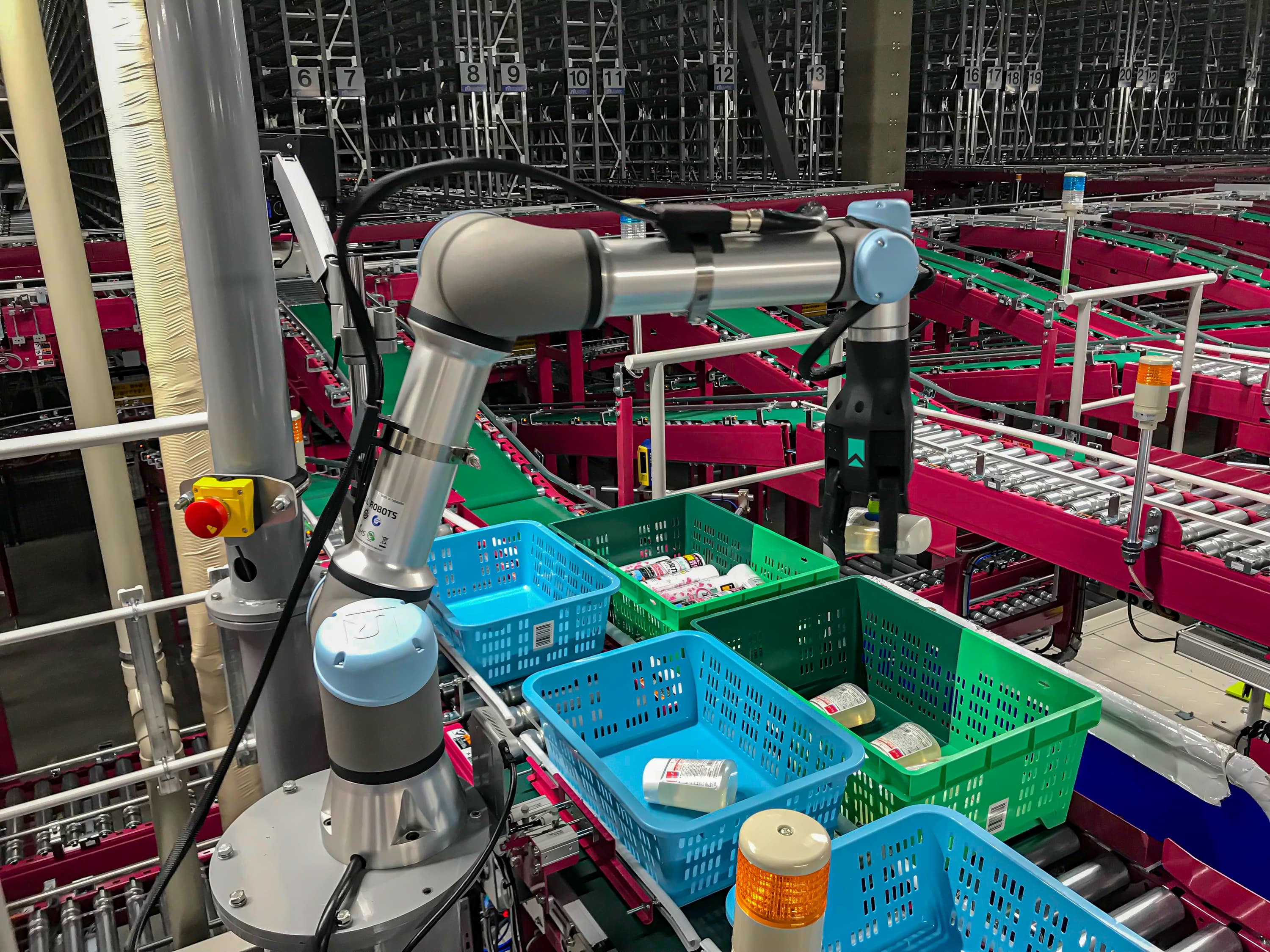


Understanding and aligning critical KPIs inclusive of the capabilities of automated piece-picking must happen within the context of the entire warehouse operation. Piece-picking can no longer be viewed as just a function within the larger scope of automation – it is now a significant factor in the efficiency of the entire order operation. By providing a realistic framework for KPI establishment, customers can measure and optimize their order fulfillment processes effectively, and drive efficiency and accuracy throughout processes.
Interoperability remains a challenge in warehouse automation, though meaningful efforts are underway to promote cross-collaboration among systems. The complexities of integrating various systems and components, such as software, AI, end-of-arm tooling, and warehouse management systems (WMS), can be significant.
"Owning the pick" is a critical concept in warehouse automation, emphasizing the necessity of having a single entity responsible for the entire picking process. Development efforts can move faster due to the clear coordination between interfaces, minimizing the number of organizations required to put the systems together. This approach eliminates potential failures arising from multiple vendors attempting to synergize disparate components. It underscores the importance of a unified system, where interoperability and collaboration among various elements are seamlessly managed and measured.
 Leaders from Apotea, Element Logic, and RightHand Robotics at Apotea's logistics center in Morgongåva, Sweden. Click the photo to see how we help fulfill 50,000+ ecommerce orders per day for Sweden's largest online pharmacy.
Leaders from Apotea, Element Logic, and RightHand Robotics at Apotea's logistics center in Morgongåva, Sweden. Click the photo to see how we help fulfill 50,000+ ecommerce orders per day for Sweden's largest online pharmacy.
There are significant disadvantages by not using systems engineering:
Systems engineering is designed to handle the integration of different components of a system, potentially leading to inefficiencies or failures in the full system.
Without a structured approach to gathering and interpreting requirements, there is a risk that requirements may be misunderstood or overlooked, leading to a product that does not meet user needs.
Higher costs can emerge due to the need for system adjustments, maintenance, or redesign if the system does not meet its intended purpose.
A key aspect of systems engineering is risk management. Without this, there might be unknown risks that cause problems later in the project.
Systems engineered with a holistic view tend to be more scalable and can grow and adapt as needed.
Systems engineering includes rigorous validation (making sure the system meets user needs) and verification (making sure the system meets the specified requirements). These checks are necessary for the final product to perform as expected.
 PALTAC Corporation, Japan's largest wholesaler of consumer packaged goods, uses the RightPick system to fulfill orders in their RDC Saitama facility (Sugito, Saitama Prefecture, Japan). Click the photo to see how PALTAC handles millions of orders with robotic piece picking.
PALTAC Corporation, Japan's largest wholesaler of consumer packaged goods, uses the RightPick system to fulfill orders in their RDC Saitama facility (Sugito, Saitama Prefecture, Japan). Click the photo to see how PALTAC handles millions of orders with robotic piece picking.Conversely, the benefits of system engineering to the overall product lifecycle are considerable:
Lifecycle management helps identify potential risks at every stage of a system's life. By anticipating and addressing these risks early, the impact of any potential problems can be significantly reduced.
By considering the entire lifecycle, from design to decommissioning, systems engineering can help optimize the use of resources and reduce overall costs. This is because decisions made in one stage can influence costs and performance in another. For example, decisions made during the design stage can influence the ease of maintenance later, which can have significant cost implications.
Lifecycle management ensures that all aspects of a system are carefully considered and tested throughout its life. This can help improve the quality of the final product, as issues can be detected and addressed at every stage.
Lifecycle management provides a comprehensive understanding of the system over its entire life. This knowledge can support informed decision-making, whether about system design, maintenance strategies, or when to decommission the system.
Many industries have regulations requiring certain considerations throughout a system's life cycle. By applying lifecycle management, systems engineering can help ensure compliance with these regulations.
Lifecycle management encourages considering the environmental impact of a system throughout its life. This includes the materials used in its creation, its energy consumption during operation, and how it is disposed of or recycled at the end of its life.
By continually aligning the system to the needs of users throughout its lifecycle, lifecycle management can enhance user or customer satisfaction by clearly communicating product upgrades, reliability, and support.
By advocating for a system-centric approach, integrators can redefine piece-picking and reshape the perception and functionality of warehouse automation. A comprehensive solution that integrates perception, planning, grasping, motion planning, and placing all this into a unified system offers a more robust and efficient alternative to the traditional component-based model. This approach, while challenging the status quo, is setting new benchmarks for operational efficiency, safety, and scalability in warehouse automation.
Sign up below to receive our newsletter.